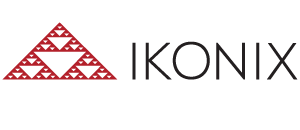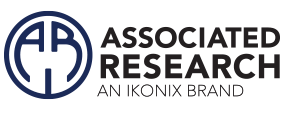MEDICAL DEVICE CASE STUDY
Applications Consulting / 2 Days
April 2019
Non-Invasive Skin Treatment
A medical device manufacturer requested our on-site training for support in preparation of a new product about to enter production. They also wanted recommendations on improving their current set of test files. Additionally, the customer wanted to confirm that the OMNIA® II system along with Autoware® 3 is performing all the test according to their requirements. We offered 2-day consulting which included the above requirements along with Electrical Safety Testing (EST) and Safe Workstation Training. This was the second visit our team had consulted with these customers who manufacture facial equipment used in a non-invasive skin treatment. Since the last visit their facility had expanded due to huge demand for their product. They have also upgraded their EST testing station to OMNIA II and Autoware 3 software from OMNIA® I.
Consulting Visit
Day 1:
We started with classroom style training on EST. This training was attended by mix group of people including: Manufacturing Engineer, Production Supervisor, Engineering Manager, Project Engineer, Safety Manager and Production Operators. The main Manufacturing Engineer was involved in creating their validation documentation and test procedures from all their product line. As part of the EST training material, more emphasis was paid to setting up a proper safe workstation, as this was one of their bigger concerns and one of the reasons for consulting. They are also in process of working with a third-party vendor to create a safe workstation, which will be guarding the operators from any type of accidental contact. The production operators had some concerns about ESD information that was presented, and we discussed as group all the recommended best practices. The customer’s Project Engineer was working with a new product and a lot of the discussion was focused on what tests would be required to be performed on the production floor. While we were reviewing all the types of tests performed during type and routine testing, we provided details on the industry wide practices followed by most medical customers. The customer was able to provide their required documents from their NRTL; this document was used on Day 1 and 2 to come up with the required test for their new product. AC Hipot, IR test and Leakage Current tests were covered in detail with the entire group. Additionally, we had planned on addressing any specific needs later.
The 2nd half of day one included a visit to the production floor to observe the operators performing the testing on two different DUT. First thing we noticed was that they had wires connected to the front of the OMNIA II for testing their TVB-2 box daily. Once that test is done, they do not remove the cables and leave them connected. We pointed out to them that this is a major issue because the Comments restricted to single page voltage is live at the HV test lead. We also discussed how this can be resolved by either removing the wires after the test or creating a test fixture.
Our next focus was verifying the test parameters of test files. The customer had a limited number of models to test, but one of their test files had the wrong PROBE Configuration (P-Hi to Line instead of GND–Line) for the leakage current test. This setting would mostly create all product that passes LCT due to the probe not being attached during the test. After seeing this, along with missing Fault Conditions as called out by the standards, we recommended we sit through and update all their test files. While updating the test file, we went over in details all the reasons behind each parameter and how it helps in confirming the testing is being performed properly.
Next on the list was to check with their repair department about an occasional failure for IR testing. We spent some time reviewing and troubleshooting the cause for this failure. We were able to point out that this failure was due to poor insulation resistance of the motors that were a part of the system. At the end of the day, the customer had a set of motors that were not passing due to a very low reading during IR testing. We also created a test file which can be used to test the motor, outside of their finished product, to verify IR values before installing it in their DUT.
Day 2:
The second day started with an overview of the new product and creating the required test for production line testing. The customer was able to provide the ELT documentation that showed the required test during production and using this document we were able to create the required test. The customer then had a bigger question of how they classify one of the ports on their device. This port makes contact with a human (patient) and is currently listed as BF type applied part. We had suggested to check with ELT to see if they classified the port correctly and if the correct tests were performed on this port. Since the DUT uses water that contacts human skin this connection needed to go through additional testing.
KEY POINTS
- New product test requirements
- Test process improvement and recommendations
- Review of test standards and test requirements
- Safe workstation setup
- Proper test connections and setup
Consulting Notes
At the end of the visit the group felt confident in using the test equipment properly and safely. The customer was seeing occasional failures due to a bad motor that was failing IR test. We noticed an unsafe workstation setup with exposed HV lead (used for TVB-2) connected all the time. We addressed this to the customer, and they were very appreciative. It was also observed that the customer was not performing the Applied Part test properly and we were able to help them understand the proper method for performing the test.




